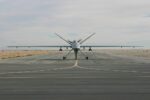Germany has announced the delivery of two additional Patriot air defense systems to Ukraine in 2025, effectively doubling its total contribution of this critical long-range capability. The move comes amid increased Russian missile and drone attacks on Ukrainian cities and infrastructure. This expanded support underscores Berlin’s evolving military posture and the growing urgency within NATO to bolster Kyiv’s layered air defense architecture.
Berlin’s Renewed Commitment: Two More Patriot Batteries for Kyiv
On September 10, 2025, the German Federal Government confirmed it would provide two more MIM-104 Patriot fire units to Ukraine by the end of the year. This follows the earlier transfer of two systems in 2023 and early 2024. With this latest pledge, Germany becomes the largest European donor of Patriot systems to Ukraine—a significant development given the system’s strategic value in defending against ballistic missiles and high-speed cruise threats.
The German Ministry of Defence stated that each battery will include a command post (ECS), AN/MPQ-65 radar unit or equivalent sensor package (likely upgraded), launcher stations (typically six per battery), and a mix of PAC-2 GEM-T and PAC-3 MSE interceptors. The exact number of launchers or missiles per battery was not disclosed for operational security reasons.
This commitment is part of a broader €1.3 billion military aid package announced by Berlin in mid-2025. It also includes additional IRIS-T SLM launchers and ammunition—another key component of Ukraine’s medium-range air defense network.
Operational Impact on Ukraine’s Integrated Air Defense Network
The addition of two more Patriot batteries significantly enhances Ukraine’s ability to defend critical infrastructure—including power plants, logistics hubs, and command centers—against Russia’s persistent use of Iskander-M SRBMs (9K720), Kh-series cruise missiles (e.g., Kh-101/Kh-555), and Shahed-type loitering munitions.
Ukraine currently operates at least three Western-supplied long-range SAM systems:
- Patriot PAC-2/PAC-3: From Germany and the United States; deployed near Kyiv and other strategic areas.
- SAMP/T: Provided by France and Italy; covers central Ukrainian airspace.
- IRIS-T SLM: Multiple batteries from Germany; provides medium-range coverage with high accuracy against drones/cruise missiles.
The Patriots are particularly effective against ballistic threats—a capability that Soviet-era S-300PS/PT systems lack. With four total batteries from Germany alone (and one from the U.S.), Ukraine can now establish overlapping coverage zones over multiple high-value regions simultaneously.
System Capabilities: Interceptor Types and Radar Coverage
The German-supplied Patriots are expected to include both PAC-2 GEM-T (Guidance Enhanced Missiles – Tactical) interceptors optimized for aircraft/cruise missile interception at ranges up to ~160 km, as well as PAC-3 MSE (Missile Segment Enhancement) interceptors designed for hit-to-kill engagements against ballistic threats at shorter ranges (~35–60 km).
The system uses AN/MPQ-series phased-array radars capable of tracking over 100 targets simultaneously with engagement capabilities against up to nine threats concurrently. While Germany has not disclosed whether it is supplying upgraded radar variants such as the AN/MPQ-65A or LTAMDS-compatible modules, open-source imagery suggests recent deliveries may include modernized fire control components with better clutter rejection—a key factor when countering low-RCS drones like Shahed variants flying at low altitude.
NATO Coordination and Strategic Implications
This reinforcement aligns with NATO’s broader strategy to build a multi-layered Integrated Air & Missile Defense (IAMD) shield over Ukrainian territory using interoperable Western systems. Germany’s decision also reflects increasing pressure within NATO circles for member states with surplus or underutilized assets to reallocate them toward active theaters like Ukraine rather than retain them for contingency scenarios alone.
NATO Secretary General Jens Stoltenberg previously urged allies during the July 2025 Vilnius Summit to “move from stockpile deterrence toward forward-enabled defense”—a policy shift that appears increasingly reflected in Berlin’s actions. Notably, Spain has yet to transfer any Patriots despite operating them domestically under NATO command structures; Poland has prioritized domestic deployment amid its own IAMD buildup under Wisła Phase II contracts with Raytheon.
Sustainment Challenges: Training Pipelines & Logistics Tail
A critical challenge remains sustainment. Each new Patriot battery requires trained crews—typically ~90–100 personnel per unit including radar operators, ECS controllers, launcher technicians, reload teams—and robust logistics support chains for spares and interceptor resupply. Ukrainian crews have been training in Germany since early 2023 under accelerated programs but expanding force structure will require parallel growth in maintenance capacity and depot-level repair capabilities inside Ukraine or nearby NATO territory (e.g., Poland).
The U.S.-led Ramstein format working groups have reportedly discussed establishing regional maintenance hubs for complex Western systems like NASAMS and Patriot near Rzeszów or Lviv—with modular depot kits already being deployed via EUCOM channels according to leaked Bundeswehr procurement documents reviewed by Der Spiegel in August 2025.
Conclusion: A Strategic Layer Added Amid Escalating Threats
The doubling of German-supplied Patriots marks a pivotal moment in strengthening Ukraine’s layered air defense network against increasingly complex Russian aerial threats. As Moscow adapts its strike tactics—including saturation Shahed swarms followed by cruise/balistic salvos—the need for robust point-defense around key nodes becomes existentially critical for Kyiv’s warfighting resilience into winter 2025–26.
If sustainment pipelines keep pace with deployments—and if other NATO states follow Berlin’s lead—Ukraine could field one of Europe’s densest IAMD networks outside Israel within a year. But this hinges on continued political will across allied capitals as much as technical interoperability on the battlefield.









